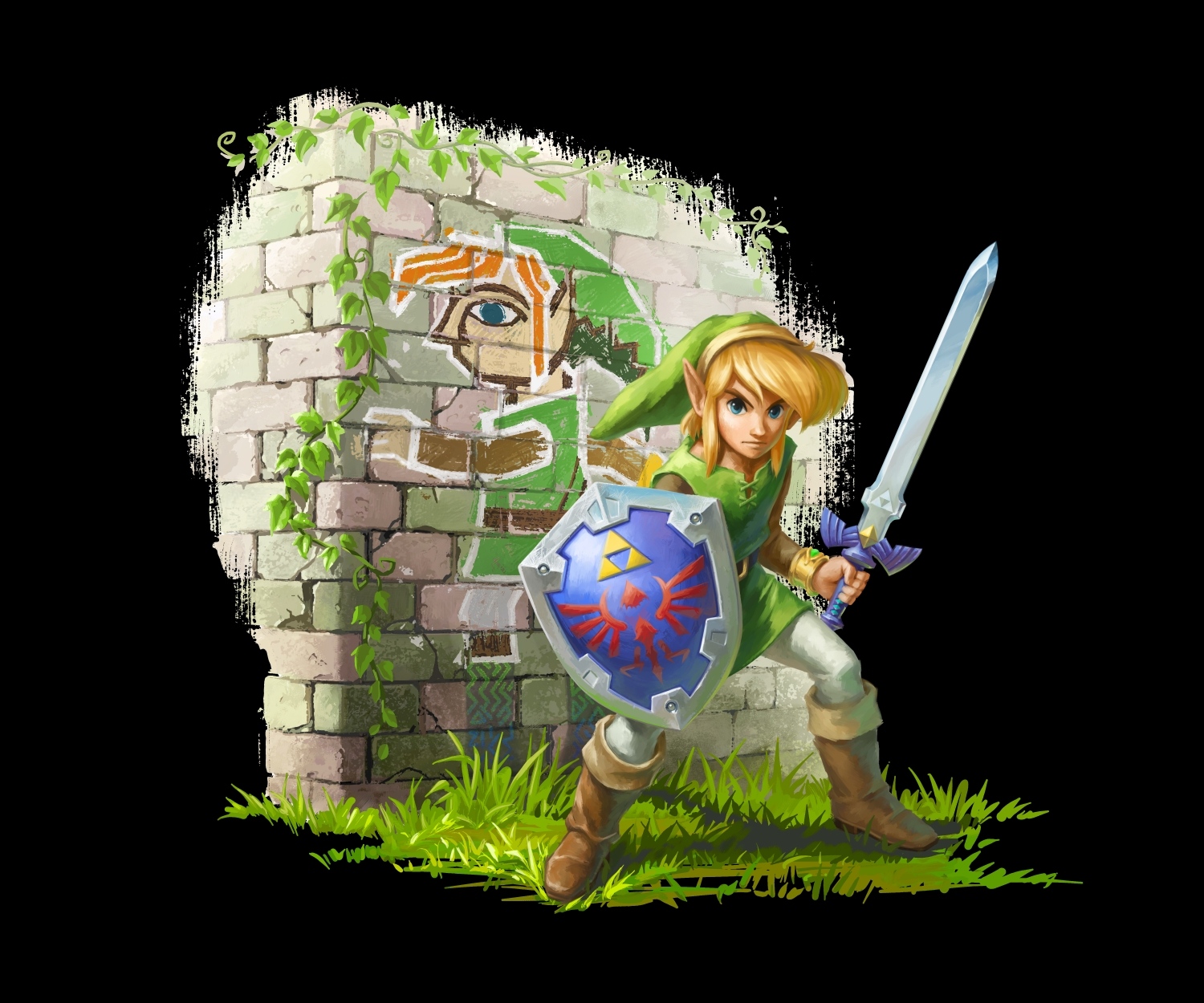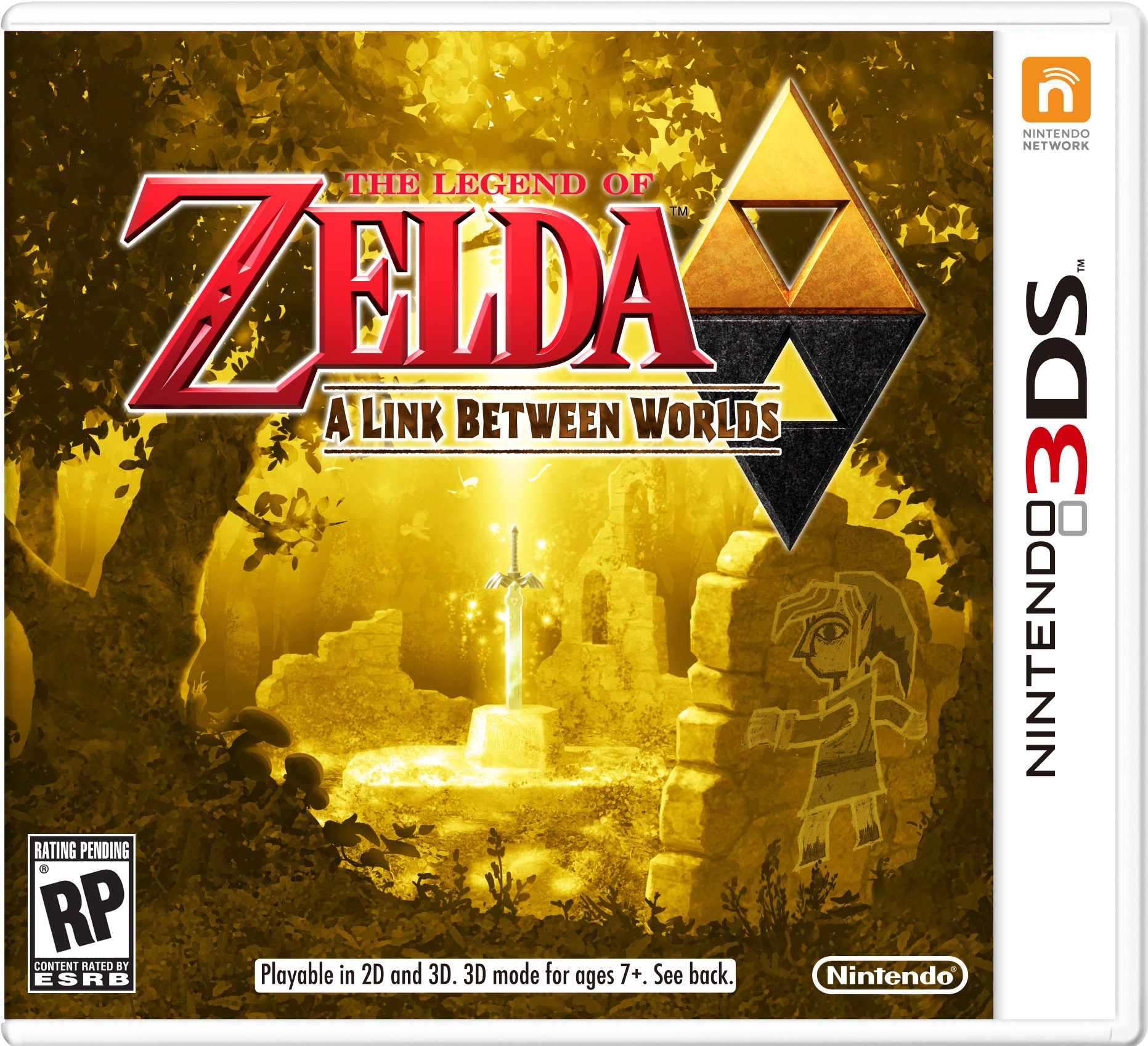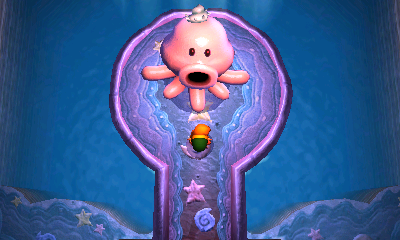As you may expect, ALBW follows a very familiar pattern for Zelda games: Zelda is kidnapped by a villain and Link must rescue her. He goes through a series of dungeons and fights bosses. As expected, the first 3 dungeons are smallish and lead up to a major story point, at which point several more "major" dungeons are introduced. It's a familiar formula, and should be very much recognized by fans of Legend of Zelda. However, ALBW separates itself in a very significant way.
In most Zelda games, each of the "major" dungeons is punctuated by finding a new item, such as the hookshot, boomarang, bow, etc. ALBW introduces a system in which Link can rent any item he needs, and eventually buy them to keep. I was apprehensive of this system at first, as I've always reveled in finding that new item deep in the heart of a dungeon. I was worried that it would diminish my enjoyment of each dungeon by not getting these items in there. Indeed, that was the case to a degree, but not nearly to the extent I thought it would. The dungeons are still a blast to figure out, and there is definitely a feeling of freedom and power by not being restricted by finding the new item. They were also careful to include some sort of upgrade in each dungeon that would provide a general upgrade to Link himself. The rental system also allows the player to visit any of the "major" dungeons in any order, whereas they are normally delegated to a specific order. And, I have to say, Nintendo did a fantastic job of keeping the dungeons balanced so that they really can be done in any order. This leads to a healthy amount of replayability for anyone interested in trying dungeons again in a new order with items at varying levels of power.
Speaking of which, the upgrade system in ALBW was actually one of my favorite changes. While previous games did have some upgrade options available for various items, they could have been easily missed. ALBW introduces the maiamais which look very much like this jerk...
...but cuter!
Mother Maiamai tasks you with finding her wayward offspring who can be found scattered around both Hyrule and Lorule. The map in each kingdom is divided to show you how many lie in each portion. I had a blast figuring out how to get each one. And, I'm glad I took the time to do so. For each 10 maiamais you find, Mother Maiamai will upgrade any item you own (not renting). Each upgrade is significant, and very well worth the effort.
On the whole, the first play through the game was not difficult. I suffered only a handful of deaths during the game. Few of the puzzles left me thinking very hard. Even the final encounter was surmounted without much difficulty (though, to be fair, the final boss fight in most Zelda games tend to be similar). However, those craving a more hardcore Zelda experience will be glad to know that there is a New Game+ mode called "Hero Mode." The only difference is that enemies hit harder. For example: in the first minor dungeon, you have 3 hears. A single hit takes away 2 hearts. This provides a good spike in difficulty without making the game unplayable.

One of the ways that the game did challenge me in an unexpected way was the new "merge" mechanic. This is an ability Link gains in the second minor dungeon which allows him to become a moving painting on a wall. This allows him to move left or right in a straight line and reach areas that would not have otherwise been reachable. He can also get around some obstacles and fit through tight spaces that would have blocked his way. It added an interesting wrinkle to the normal puzzles found in a Zelda game.
One of the elements of the game that surprised me the most was the story. I was not expecting this game to have much of a story, for some reason. However, the ending was one of the most touching I've seen in any Zelda game. There was also a twist that I didn't see coming, though the signs were all there from the beginning.
All in all, A Link Between Worlds is a fantastic game and a must-buy for the 3DS. It is one of the few games where I played with the 3D on max as much as possible. It didn't necessarily add to my experience, but it was just well done and added a nice aesthetic depth to the game (which is weird for a game in which you spend a good portion as a painting on a wall). I don't think people will look back as fondly on this game as they will LttP, but its still a rather entertaining and engaging return to Hyrule that is well worth your time.





No comments:
Post a Comment